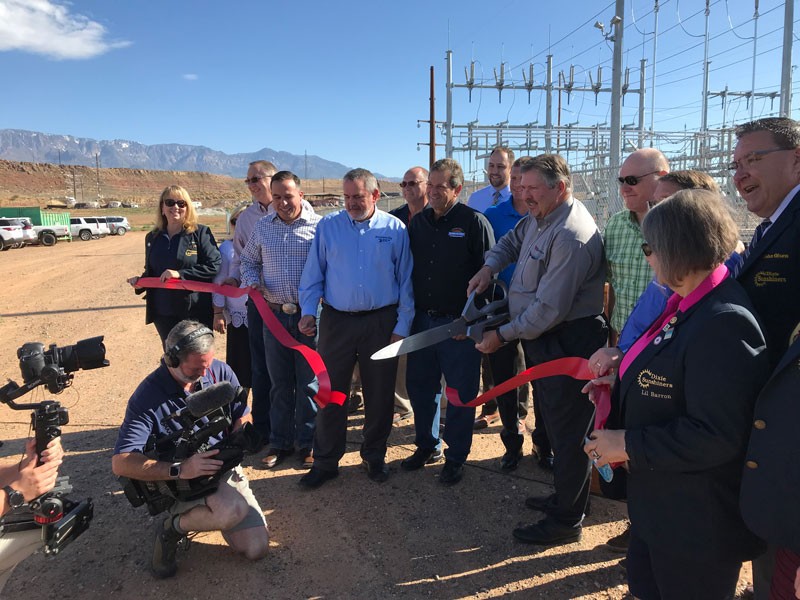New substation to improve electric service in SW Utah

HURRICANE, Utah — Officials in southwestern Utah will meet June 5 at 9 a.m. to note the operation of a new electric substation built with the coordination of multiple electric utility providers who serve customers in the region.
Utah Associated Municipal Power Systems (UAMPS), Deseret Power and Rocky Mountain Power will meet to cut a ceremonial ribbon to mark the beginning of operations at the Purgatory Flat substation, located at 1000 South Regional Park Road in Hurricane City. Remarks will be offered by Douglas Bennion, vice president, Engineering Services, Rocky Mountain Power and Colin Jack, Chief Operating Officer/Engineering Manager, Dixie Power.
The facility is a key component resulting from years of mutual cooperation for electric system improvement and planning in southwestern Utah. This addition to the electric network will provide service for existing customers in the area and provide for growth. It will also increase flexibility to re-route power in the event of service interruptions from weather or other causes, and aid overall system reliability.
Substations like Purgatory Flat contain equipment to transform the voltage from transmission lines to distribution circuits that serve customers. They also contain protective equipment and switching facilities to ensure reliable service and aid system maintenance and management of power interruptions.
Following a joint long-range plan, Rocky Mountain Power will own and operate the Purgatory Flat substation, supplying electric transmission feeds to Deseret Power and UAMPS members for their customers, as well as to Rocky Mountain Power customers in its service area. The companies estimate that the new substation will supply about 166 megawatts of capacity to customers of the participating utilities. That is equivalent to the annual use of more than 80,000 typical homes.
The utility companies have jointly studied the future transmission requirements for southwestern Utah beginning in 2005 with a joint operation and interconnection agreement. The resulting studies identified a number of transmission improvement projects to meet the rapidly growing electric service needs of customers served by the electric providers. This work produced more than $400 million of new investment in transmission lines, substations and related equipment during the past 15 years.